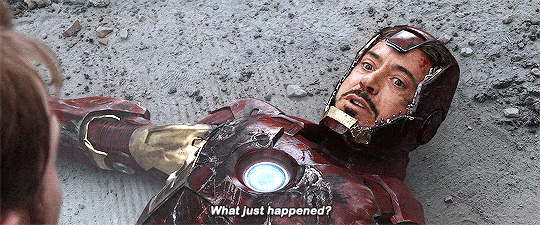💸Goldman Sachs Hops Aboard the Mall Short💸
Mall Shorts Gather Steam
In last Wednesday’s “Thanos Snaps, Retail Disappears👿,” we included a LOOOOOONG list of retailers that are shutting down stores. Subsequently, J.Crew Group announced that it is closing a net 10 stores (20 J.Crew locations offset by 10 Madewell openings), Williams-Sonoma Inc. ($WSM) announced that it plans to close a net total of 30 stores, Hibbett Sports Inc. ($HIBB) announced approximately 95 stores will close this year, and Tommy Hilfiger closed its global flagship store on Fifth Avenue (Query: is New York City f*cked?) and its Collins Avenue store in Miami.
The point of the piece, however, wasn’t to wallow in retail carnage: rather, it was to make the point that there’s no way the malls — or at least certain malls — could continue business as usual.* With thousands of stores coming offline, we argued, there have to be malls that start feeling the pain and, eventually, run afoul of their lenders. We used $CBL as our poster child and closed by stating that Canyon Partners was shorting mall-focused CMBS via a CDS index, the Markit CMBX.BBB- (and lower indices).
Apparently Goldman Sachs Inc. ($GS) is in on the action. Late last week, Goldman urged“clients join the "big short" bandwagon by going short CMBX AAA bonds (while hedging in a pair trade by going long five-year investment-grade corporate CDX).” ZeroHedgesummarizes the Goldman report as follows:
Citing the bank's recent review of potential areas of financial imbalance across the US corporate and household sectors, [the Goldman analyst] notes that stretched CRE valuations ranked near the top in terms of risk level; and while a large and immediate commercial property price downturn is not the bank's baseline forecast, "a scenario with falling commercial property prices in the next 1-2 years is one to which we would attach non-negligible probability" the analysts caution.
And, then, in customary hyperbolic form, Zerohedge concludes:
Why is this notable? Because regular readers will recall that the 2007/2008 financial crisis really kicked in only after Goldman's prop desk started aggressively shorting various RMBS tranches, both cash and synthetic, in late 2006 and into 2007 and 2008, with the trade eventually becoming the "big short" that was popularized in the Michael Lewis book.
Will Goldman's reco to short CMBX-6 AAA be the trigger that collapses the house of cards for the second time in a row? While traditionally lightning never strikes twice the same place, the centrally-planned market is now so broken that even conventional idioms have to be redone when it comes to the world's (still) most important trading desk. In any case, keep an eye on commercial real estate prices: while residential markets have already peaked with most MSAs sliding fast, commercial may just be the first domino to drop that unleashes a tsunami of disastrous consequences across the rest of the market.
It is far from certain that all of this noise about shorting CMBS is anything more than isolated trades. One thing that is certain? Zerohedge is better at drumming up fear than Jordan Peele.
*****
Speaking of J.Crew, S&P took a dump all over it yesterday as it downgraded the issuer credit rating to CCC and simultaneously downgraded its “intellectual property notes” — ouch, that must sting some (short asset stripping?) — and its secured term loan facility. The ratings agency maintains a “negative outlook” on the company, saying that “operating results deteriorated considerably in the most recent quarter,” and “approaching maturities of the company’s very high debt burden could lead J.Crew to restructure its debt in the next 12 months.” S&P provides a damning assessment:
We think the company continues to face significant headwinds to turn around operations which haven’t meaningfully improved since the J Crew brand relaunch in 2018. These threats include fast fashion and online retail, as well as continued declines in mall traffic and greater price transparency across the apparel industry. We believe these trends are especially heightened for U.S. mid-priced apparel retail players as consumers shift apparel spending toward brands with a consistent customer message or more appealing prices, given the continued preference for value, freshness, and convenience.
Tell us how you really feel, S&P.
*****
Speaking of damning assessments, there was this flamethrower of a press release issued by Legion Partners Holdings LLC, Macellum Advisors GP LLC, and Ancora Advisors LLC regarding Bed Bath & Beyond Inc. ($BBBY). Burn, baby, burn.
PETITION readers will recall our previous discussion of BBBY. In January in “Is Pier 1 on the Ropes? (Short “Iconic” Brands),” we included discussion of BBBY and declared:
Bed Bath & Beyond swam against the retail tide last week as the company’s stock showed huge gains after it said that it is ahead of its long-term plan and that it is successfully slowing down declines in operating profit and net earnings per share. Which is interesting because, putting forward guidance aside, the ACTUAL numbers weren’t all that great. In fact, the company’s trend of disappointing same-store sales continues unabated (negative 1.8%, worse than forecast). EPS and revenue numbers were slightly better and slightly worse, respectively, than expected. Which means that to drive the higher EPS, the company must be taking costs out of the business. We have no crystal ball and this is in now way meant to be construed as investment advice, but we’re not seeing justification for a massive stock price increase (up 15% from when we wrote about it and 30% from its December 24 low).
Suffice it to say, the aforementioned investors were far from impressed. The press release kicks off with:
“Magnitude of value destruction necessitates wholesale board and leadership changes. CEO Steven Temares has overseen the destruction of more than $8 billion in market value over his 15-year tenure, with total shareholder returns of negative 58%. Since early 2015, the stock has lost over 80% of its value.”
Certainly not mincing words there, that’s for sure.
It then follows with:
Failed retail execution and strategy. Apparent inability to prioritize a long list of poorly implemented initiatives and management’s lack of success in adapting its business model to a changing retail landscape, has resulted in stagnant sales and adjusted EBITDA margins declining from 18% in fiscal 2012 to 7% in the last 12-month period ending November 2018.
Deeply entrenched board lacking retail experience is an impediment to serving shareholder interests. Average director tenure is approximately 19 years and the lack of retail expertise and stale perspectives on the board have hindered proper oversight of the management team.
We mean…those are just cold. Hard. Facts. And they’re not wrong about the board: it strains credulity to think that the Head of the TIAA Institute, a pensioned partner at Proskauer Rose LLP, and an EVP for Verizon Communications Inc. know f*ck all about the travails afflicting retail these days (to be fair: it seems the founder and CEO of Red Antler, a reputable branding agency that has helped build the likes of Casper, Keeps, Boxed, Google, allbirds and Birchbox makes sense…if anything has value here…and, yes, we’re REALLY stretching here…its the, gulp, brand…like, maybe??…or, like, maybe not???).
Seriously, it’s not really difficult to argue with this (even if the investors take some liberties in defining companies like Restoration Hardware ($RH) as “retail peers”):
Problematically, however, the three firms own merely 5% of the outstanding common stock so there’s not a ton that they can do to agitate for change. The market, though, doesn’t seem to give a sh*t: it just wants something…anything…to happen with this business.
More significantly, investors simply cannot sit on the sidelines anymore and watch retail management teams flail in the wind. We discussed certain management teams that really seem to be skating to where the puck is going, see, e.g., $PLCE. But many others aren’t and those that aren’t act at their own peril. Here, at least, investors are putting management and the board of directors on notice.
Expect to see other investors act similarly in other cases.
*There are a number of malls, however, that do seem to be continuing business as usual. This piece makes the point that apocalypse is not as bad as the media makes out.






